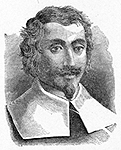A Brief History Of Weather Measurement

1450 Leon Battista invents the first anemometer (from the Greek word for wind, “anemos”), which measures wind velocity using a disk placed perpendicular to the wind. The familiar spinning “cup” anemometer was invented in 1846, and the sonic anemometer was first developed in 1994.

1593 Galileo Galilei invents the thermometer by suspending glass bulbs of varying weights in a tube of water. The bulbs rise and fall as the changing temperature alters the density of the water. In 1714, Gabriel Fahrenheit fashioned the first mercury thermometer. This station uses precision thermistors, which change in electrical resistance with temperature.

1644 Galileo’s student, Evangelista Torricelli, invents the barometer when he notices the mercury-filled glass column he used for vacuum experiments reacts to changes in atmospheric pressure. This station measures the bending of a silicon diaphragm to determine pressure.

1893 The Utah Territory's 20th weather station is established at Utah Agricultural College. Precipitation and maximum/minimum temperature data are recorded. The College begins receiving telegraphic weather forecasts from the USDA in San Francisco. Signal flags with daily weather forecasts are raised from the College flagpole, and are visible to farmers across Cache Valley.

2011 A solar powered environmental observatory is erected at USU. The observatory measures all standard weather conditions, five components of solar radiation, carbon dioxide in the air, and seven conditions underground. A state-of-the-art atmospheric visibility sensor measures the clarity of the air in Cache Valley, a unique feature of particular interest to local residents.

